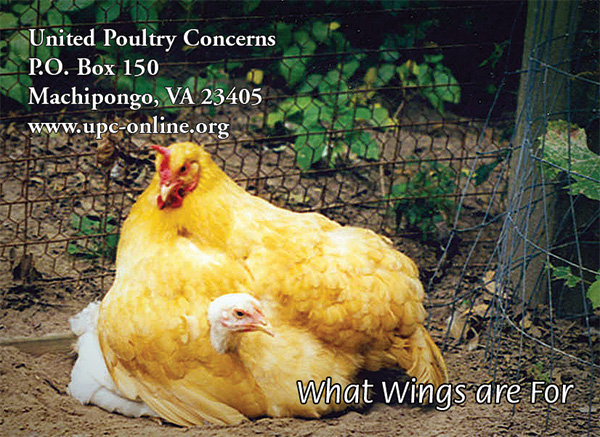Cognitive Blindness in Human Perception of Chickens and Other Birds
Veterinary Schools, Animal Sciences Need to Provide More Enlightened Teaching
During her veterinary residency at Cornell University, Dr. Emily Levine did a research project investigating how veterinary students perceive an animal’s ability to think and feel emotions. She writes: “overall everyone seems to believe that poultry are less capable of being able to think and to have emotions. Most believe that cats and dogs are most capable of these things and other farm species fell in between. If individuals do not believe farm species can think or feel emotions then it is unlikely they will fight for higher standards of welfare. Animal behavior, welfare, and cognition should be a required course in every vet school and undergraduate animal science program.”
Veterinarian Dr. Holly Cheever, Vice President of the Association of Veterinarians for Animal Rights and a member of United Poultry Concerns' Advisory Board, responded to this dilemma in an email on December 4, 2007:
“Emily’s Cornell research, in which students showed that they felt poultry have less ability to think and feel emotions than other ‘farmed’ and companion animals, exemplifies the usual human shortcoming: if we do not become sufficiently familiar with a species to know what goes on behind its eyes, we simply decide that its members lack sentience because WE think that if we see nothing, the deficit must be in the species in question, and never in us.
“I say this as a veterinarian caring for ‘pet’ poultry and the mother of a chicken-passionate daughter. We have had various chickens come inside our home for visits. BlackieCrow came in for tea parties by our wood stove routinely and also sat next to our daughter Brenna on a tree limb while Brenna read her stories, and she would cluck and chortle (excuse me, ‘vocalize’) in response. Monsieur would come inside to join Brenna for naps, and I did not realize this until I would wake Brenna up in the mid-afternoon, and find a sleeping rooster on her chest. Neither of these chickens soiled indoors, by the way.
“As we observed our small flock of chickens over the years, we saw affections and loyalties and problem solving behaviors and even trickery, and of course we saw the extraordinary maternal behavior of hens raising their chicks. I say this only to point out that poultry are not as non-sentient or insensate as we mammals, who cannot read their expressions, might think.
“We should give all animals the benefit of the doubt that they are fully sentient, even if our senses are too dull to appreciate fully their intelligence.” – Holly Cheever, DVM
